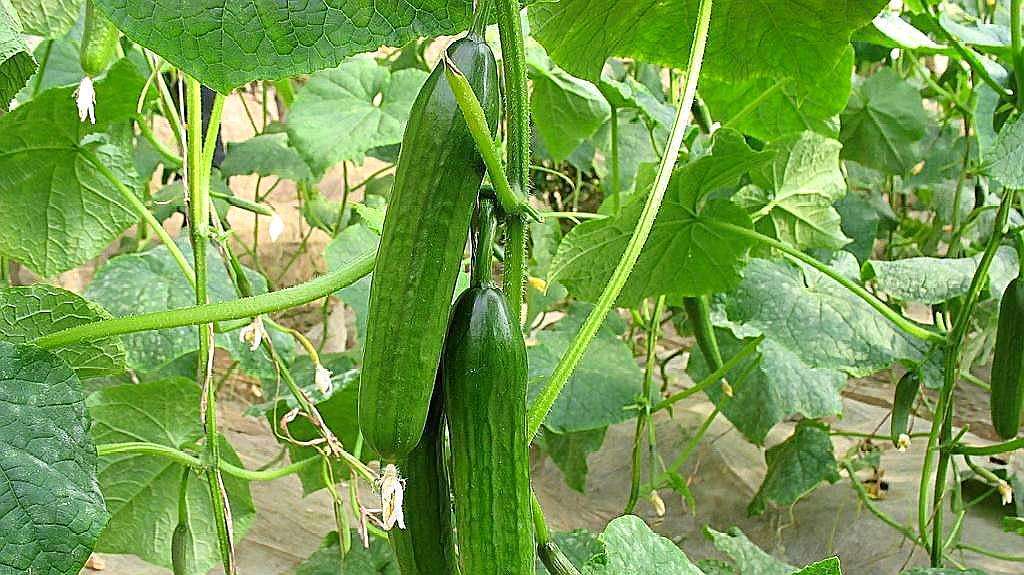Welcome to Jiangxi New Reyphon Biochemical Co., Ltd!
Service Hotline:0796-2676038 中文版 · ENGLISH
Discussion on Plant Growth Regulator
Release time:
2020-05-23
Now the market is misled by some manufacturers, such as plant regulators are hormones, plant regulators are harmful to human body, and some fertilizer manufacturers even publicize that my products do not contain hormones and do not contain regulators. In fact, it is a misunderstanding. From my cognitive point of view, plant regulators, like food additives, only play an auxiliary role and are beneficial to be applied within a certain range.
At present, plant regulators belong to the scope of pesticides, and the state has also issued a series of measures to control pesticides. Reasonable use is legal. It is illegal to add plant growth regulators to fertilizer products that have not obtained pesticide registration, while plant regulators that have obtained pesticide registration certificates cannot be labeled with nutrients at present. Therefore, most medicinal fertilizers on the market still reflect the functions of pesticides, labeling pesticide ingredients but not nutritional ingredients; however, the current fertilizer products mostly reflect the function of nutrition and the efficacy of plant growth regulators, but they dare not and are not allowed to be labeled, otherwise it is illegal.
There is no clear statement as to whether the double standard is legal (I. e. obtaining pesticides and obtaining fertilizer registration). However, the current fertilizer products have to add synergistic ingredients in order to quickly reflect the product effect. How to be legal and effective is a problem for synergist enterprises and fertilizer product development enterprises to think about.
1. plant regulator type:
1. It is recognized that there are 5 types of plant adjustment, namely, auxin, gibberellin, cytokinin, ethylene and abscisic acid. Generally speaking, the first three categories are substances that promote plant growth and development. Ethylene is mainly a substance that promotes organ shedding, and abscisic acid is a substance that inhibits plant growth and development.
2, according to the effect of classification: according to the impact on plant physiological activities can be divided:
(1) It is an accelerator that can promote plant growth, including gibberellin, ethephon, clopidiuron (pyridoxone, pyridoxine), thiazuron (defoliation), cyclopropionamide acid, triacanol, benzyl adenine, 4-chlorophenoxyacetic acid (antiflandone, lycopene), naphthalene acetic acid, amyl fresh ester, tacyclic acid, sodium, brassicolide, chitosan, etc.

(2) It is an inhibitor, which can inhibit plant growth, including abscisic acid, aidan (cyanine, maleic hydrazide), triiodobenzoic acid, glyphosine, and plastic.
(3) It is a retarder, which regulates and delays growth, including mepafon (regulating amine, metomequat), chlormequat, choline chloride, paclobutrazol, uniconazole, butazole, antipantamine, antipantamine, antipantyl, flutamine, thioxanyl, butyrohydrazide, regulating phosphine, pyridine alcohol, etc.
3. Plant regulators commonly used in fertilizers are added to most of the pesticides, foliar fertilizers and some functional fertilizers on the market. Fertilizers and pesticides commonly used on gibberellin, indole acetic acid, naphthalene acetic acid, amine fresh ester, complex nitrophenolate sodium, brassinolide, triacontanol. At present, the general regulators that add more fertilizers on the market are amine fresh ester, sodium complex nitrophenolate and brassinolide, which can be added to organic fertilizer, compound fertilizer, water-soluble fertilizer and foliar fertilizer. Indole acetate and naphthalene acetate were added to rooting powder and seedling substrate.
2. plant regulator effect
Plant growth regulators in the application of the main features are as follows:
1, the role of a wide range of applications;
2, the effect is significant, less residual toxicity, the use of low concentrations of plant growth regulators can play an important role in regulating plant growth, development and metabolism;
3. Some problems that are difficult to solve by cultivation techniques are solved by using plant growth regulators, such as breaking dormancy, regulating sex, promoting flowering, chemical pruning, preventing shedding, promoting rooting, enhancing resistance, etc.
Application of 3. at home and abroad
In the world has been widely used in modern agriculture, is to increase the yield of agricultural products, improve the quality of a method, at home and abroad has been applied to these studies as one of the main measures to achieve over-yield agriculture in the 21st century.
Foreign countries are allowed to use plant regulators, the European Union, Japan, Australia and other countries on the use of plant regulators in crops to register, strict regulations on the amount, usage, this registration is similar to China's fertilizer registration and pesticide registration. For example, Australia has set a limit of 0.01 mg/kg for paclobutrazol in stone fruits and various tropical and subtropical fruits (with inedible skins); Japan has set a temporary limit of 0.2 mg/kg for gibberellin; Australia has set a strict standard for clopiduron used as an expanding agent, with a limit of 0.01 mg/kg for six fruits such as kiwifruit and grapes; the limit standard of thiazuron in grape, watermelon, cantaloupe and kiwi fruit was established in South Korea, except that the limit of 0.2 mg/kg in grape and 0.1 mg/kg in other three kinds of fruit. At present, the international limit for 2,4-D in citrus (including peel) products is relatively loose, ranging from 1.0 to 5.0 mg/kg, while the limit for other fruits is relatively strict. For example, CAC stipulates a limit of 0.01 mg/kg for pears and apples. Japan sets a limit of 0.01 mg/kg for pears and apples. The United States sets a limit of 0.05 mg/kg for pear fruits and stone fruits.
4. Use Restrictions and Effects
When using, first determine the dose and then determine the concentration. If the concentration is too large, it is easy to cause drug damage, and if the concentration is too small, it has no effect. Basically, the positive and negative effects of the use of regulators are obvious in 24 hours -72 hours. There are 4 kinds of fertilizers added on the market:
1. Amine Fresh Ester Amine Fresh Ester DA-6 is a high-energy plant growth regulator with broad-spectrum and breakthrough effect newly discovered by American scientists in Z in the 1990 s. It can promote plant stout and resistance to lodging, promote early maturity of crops, increase yield and improve crop quality. The yield can be increased by 10-40%, and the early maturity can be effective for 5-7 days and 6-24 hours.
2. Sodium nitrophenolate is a high-efficiency plant growth regulator first discovered by Z in Japan in the 1960 s. In 1997, with the approval of the US National Environmental Protection Agency, sodium nitrophenolate entered the US Green Food Project and became the only synthetic plant growth regulator at that time. Sodium nitrophenolate and its preparations have been designated as plant growth regulators recommend green food engineering by the International Food and Agriculture Organization (FAO). Miao Zhuang, disease resistance, stress resistance, increasing flowers and fruit, increasing fruit size, sweet taste, improving quality, early maturity, increasing yield by 5-30%, and effective in 24-48 hours.
3. Brassinolide Brassinolide was discovered by a team of scientists from the Research Center of the United States Department of Agriculture. After 1987, it was recognized as the sixth type of plant hormone by the academic community. A new type of green plant growth regulator is obviously effective when applied for 12-24 hours, which is treated by soaking seeds with appropriate concentration of brassinolide and spraying stems and leaves. It can also advance the picking time of tea leaves, and it can also make melons and fruits have higher sugar content, larger individuals, higher yields, and more resistant to storage. Plant hormones are harmless to humans and animals, and the normal dose is very safe and effective. Natural brassine can be widely used in a variety of economic crops, generally can increase the yield of 5-10%, high up to 30%.
4. Naphthalene acetate auxin analogs, commonly used in commercial rooting powder or rooting agent, can promote rooting and germination, control plant type, induce flowering and fruiting, prevent flower disease and abscission.
5. common substances with plant regulator function (also several categories of plant stimulating hormone)
1. Humic acid is used as a nutrient soil additive, rooting and root strengthening fertilizer additive, soil conditioner, plant growth regulator, foliar fertilizer compound agent, cold resistance agent, drought resistance agent, compound fertilizer synergist, etc., and nitrogen, phosphorus, The humic acid fertilizer made by combining potassium and other elements has the functions of fertilizer efficiency, improving soil, stimulating crop growth, and improving the quality of agricultural products. Magnesium humate, zinc humate, and iron urea humate had good effects on supplementing magnesium deficiency in soil, zinc deficiency in corn, and iron deficiency in fruit trees, respectively; humic acid mixed with pesticides such as weed ether and atrazine can improve efficacy and inhibit residual toxicity; sodium humate is effective in the treatment of apple tree rot.
2. Fulvic acid broad-spectrum plant growth regulator can promote plant growth, especially can properly control the opening degree of crop leaf stomata, reduce transpiration, play an important role in drought resistance, can improve stress resistance, increase yield and improve quality. The main application objects are wheat, corn, sweet potato, millet, rice, cotton, peanut, rape, tobacco, silkworm mulberry, melon and fruit, vegetables, etc. Can be mixed with some non-alkaline pesticides, there are often synergies.
3. Amino acids (1) supplementary source of organic nitrogen nutrients;(2) chelating agent of metal ions. Amino acids have the function of complexing (chelating) metal ions, and it is easy to carry the medium and trace elements (calcium, magnesium, iron, manganese, zinc, copper, molybdenum, boron, selenium, etc.) required by plants into plants to improve the utilization rate of various nutrients;(3) enzymatic preparation.
4, seaweed extract in algae, mainly used as a plant growth regulator, can promote cell division, delay senescence and enhance the growth of roots and stems.
5. Chitin extracted from crabs, shrimps, shells, etc. can activate cells, promote root growth, make stems and leaves flourish, and make flowers bloom more beautiful, fruits more fruitful, and also has the function of sterilization and soil improvement.
To sum up, this is the reason for the current fire of mineral-derived fulvic acid, amino acid, chitosan, alginic acid, etc. Most of the plant regulators attributed to manufacturers have corresponding standards to test. Most fertilizer enterprises are not willing to take risks to add them. When the product effect and selling point are insufficient, only the concepts and effects of mineral-derived fulvic acid and amino acid can be used, and some plant fermentation products such as the current publicity is very hot. Of course, there are also standard defects, the current plant growth regulators are also facing this replacement.
Related news
Jiangxi Xinruifeng Biochemical Co., Ltd.
Address: In Salt Chemical Industry City, Xingan County, Ji'an City
Jiangxi Province
Contact number:0086-0796-2676028
RM:Chen Hongxia (Amy)
E-mail:wantyan@reyphon.com
Tel: 18172879783

No public

Douyin

Kuaishou




